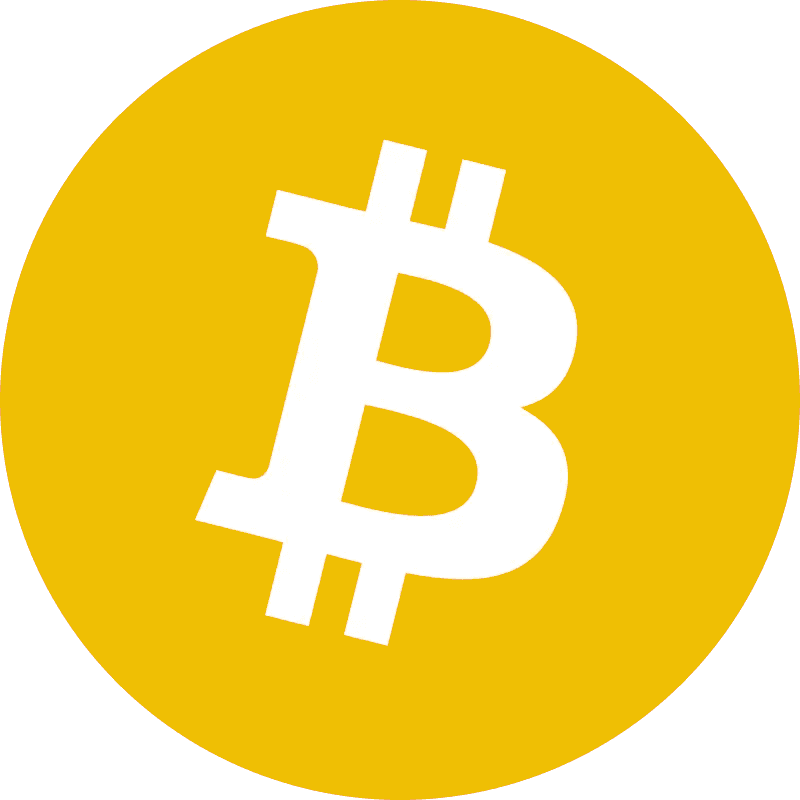September was an eventful month for crypto investors. Bitcoin had one of its strongest Septembers on record, while altcoins showed mixed results. Still, momentum is broadening with standouts like Avalanche and Near. Listed products also saw strong net inflows, confirming that investor appetite for regulated exposure remains solid. At the same time, central bank policy shifts, regulatory developments, and upcoming technology upgrades shaped the outlook for the months ahead.
In this newsletter, we review market moves, highlight the biggest news from September, and share our ETP performance along with the results of our latest index rebalance.
How the market moved in September
Bitcoin held firm through a traditionally weak month
September is usually one of Bitcoin’s weakest months. But 2025 was different, BTC gained about 5%, its third-best September since 2013. For most of the month, Bitcoin traded between $107,000–117,000, showing resilience and steady demand. Instead of selling off, investors bought the dips, creating a base of stability that supported the wider market.
Altcoins remain in focus despite a mixed September
While Bitcoin stayed steady, attention shifted to altcoins. Trading volumes in many alternative assets began to outpace Bitcoin and Ethereum, showing investors were ready to diversify. The Altcoin Season Index - which measures how strongly altcoins are outperforming Bitcoin - climbed above 80, a level that signals most altcoins have outperformed Bitcoin over the past three months. September itself was mixed, but standouts like Avalanche (+22%) gained traction, evidence that leadership is slowly expanding beyond just Bitcoin and Ethereum.
Strong inflows into ETPs and ETFs
Investor appetite was clear in listed products. Digital asset ETPs recorded around $4 billion in net inflows during September, this brought year-to-date inflows close to $190 billion, pushing digital asset ETP assets under management toward record highs. Bitcoin captured the largest share, while Ethereum flows were more volatile, swinging between outflows and inflows but showing that investors remained highly active around the asset. Solana set a record for single-day inflows, underlining growing demand for alternative assets in regulated vehicles. In the U.S., spot Bitcoin ETFs also saw steady demand, acting as a reliable gauge of sentiment.
A market broadening out
Overall, September was not about Bitcoin losing dominance, but about the market broadening. Bitcoin anchored stability, while capital rotated into altcoins and diversified products. With the Federal Reserve cutting rates and volatility easing, conditions improved across the board. The month closed with healthier flows, wider participation, and clear catalysts ahead, from Ethereum’s upcoming upgrade to possible ETF approvals that could carry momentum into Q4.
Key Market News from September
Fed cuts rates by 25 bps (Sept 17)
The Federal Reserve made its first rate cut since 2020, lowering the federal funds rate by 25 basis points. While modest, it marked the end of the tightening cycle and confirmed that financial conditions are beginning to ease.
Why it matters: Lower rates ease financial conditions, increasing liquidity in the system. This often pushes investors toward risk assets like crypto, making Bitcoin and Ethereum more attractive relative to interest-bearing alternatives. The result is typically stronger demand and healthier capital flows into digital assets.
Ethereum roadmap clarity - Fusaka upgrade set for Dec 3
Ethereum developers set December 3 as the date for the next major upgrade (“Fusaka”), which will expand “blob” capacity and reduce fees on Layer-2 networks. Layer-2s (such as Arbitrum, Polygon, and Base) process transactions more cheaply and quickly before settling them on Ethereum.
Why it matters: Lower fees make Ethereum apps more usable, increasing activity and transaction volumes. This strengthens ETH’s role as the main settlement layer for decentralized finance. The return of inflows into Ethereum products in September suggests investors are already positioning themselves.
New Generic Listing Standards from the SEC
In September, the U.S. Securities and Exchange Commission (SEC) approved generic listing standards for spot ETFs linked to commodity-based assets, including digital assets. This means that exchanges such as Nasdaq, NYSE Arca, and Cboe can now list certain crypto products without each ETF having to go through a full individual approval process. Under the new framework, the approval timeline can be shortened from several hundred days to roughly 75 days, provided certain conditions are met.
Why it matters: This change is widely seen as a paradigm shift for the U.S. crypto market, as it removes key bottlenecks and makes it easier for altcoins to enter the ETF format. Against this backdrop, interest in Solana and XRP ETFs has gained renewed momentum. Applications for these products accelerated in September, with decisions expected in October. The anticipation alone has already driven inflows into Solana and XRP ETPs, showing that institutions are ready to broaden their exposure. Approval of Solana or XRP ETFs could serve as a catalyst for capital flows beyond Bitcoin and Ethereum and further strengthen the legitimacy of alternative blockchains.
FTX bankruptcy estate starts US$1.6bn distribution
After two years of proceedings, the FTX estate started another round of creditor repayments at the end of September, totaling about $1.6 billion. This time, payments were primarily in cash rather than crypto.
Why it matters: The repayments free up capital previously tied up in bankruptcy. Some of this money may flow back into digital assets, adding liquidity to the market. Historically, such payouts have had a neutral to slightly positive effect on sentiment.
Nasdaq files to enable tokenized securities trading
Nasdaq submitted a proposal to the SEC to list and trade tokenized securities on its main U.S. market.
Why it matters: Tokenization - issuing traditional financial instruments like bonds or equities on a blockchain - is a major adoption theme. If approved, Nasdaq’s move would integrate blockchain into the core of capital markets, offering faster settlement, lower costs, and around-the-clock trading. For crypto, it validates the technology and blurs the line between traditional and digital assets.
EU Regulators Signal Stricter Rules Beyond MiCA
In September, regulators in France, Italy, and Austria issued a joint statement calling for tighter investor protection and enhanced supervisory oversight as the EU’s MiCA framework takes effect.
Why it matters: MiCA has already set a global benchmark for crypto regulation, but these new initiatives show that Europe is determined to go further. Stricter standards may curb excessive risk-taking but also strengthen institutional confidence and create a more stable market environment. This reinforces Europe’s position as a leading hub for regulated digital assets — and could attract both domestic and international capital to the region over time.
Performance Virtune Crypto ETPs: September
Virtune Avalanche ETP: +22.24%
Virtune Staked Near ETP: +9.91%
Virtune Bitcoin Prime ETP: +3.82%
Virtune Staked Solana ETP: +3.8%
Virtune Bitcoin ETP: +3.71%
Virtune Staked Polkadot ETP: +3.31%
Virtune XRP ETP: +2.41%
Virtune Stellar ETP: +2.18%
Virtune Coinbase 50 Index ETP: +0.68%
Virtune Crypto Top 10 Index ETP: +0.12%
Virtune Crypto Altcoin Index ETP: +0.09%
Virtune Staked Cardano ETP: -3%
Virtune Litecoin ETP: -4.56%
Virtune Staked Ethereum ETP: -5.81%
Virtune Chainlink ETP: -7.47%
Virtune Arbitrum ETP: -16.77%
Virtune Polygon ETP: -20.01%
Rebalance Update - Virtune Crypto Altcoin Index ETP
The scheduled rebalance of the Virtune Crypto Altcoin Index ETP took place on the 30th of September. This product follows an equal-weight methodology, where each asset in the index is given the same share at the rebalance date. This approach ensures no single altcoin dominates the portfolio, while systematically capturing a broad mix of leading projects.
New weights (effective as of October 1):
Cardano (ADA): 10% (previously 9.44%)
Litecoin (LTC): 10% (9.33%)
Solana (SOL): 10% (11.67%)
Uniswap (UNI): 10% (7.62%)
XRP: 10% (10.06%)
Avalanche (AVAX): 10% (13.19%)
Bitcoin Cash (BCH): 10% (10.16%)
Chainlink (LINK): 10% (8.49%)
Polkadot (DOT): 10% (10.51%)
Rebalance Update - Virtune Crypto Top 10 Index ETP
The scheduled rebalance of the Virtune Crypto Top 10 Index ETP took place on September 30. This product updates its allocations based on the latest market capitalizations of ten of the largest crypto assets with a 40% maximum weight per asset. The methodology ensures that the portfolio continuously adapts to changes in the market while maintaining diversified exposure across both the dominant assets and a selection of major altcoins.
New weights (effective October 1st):
Bitcoin (BTC): 40.00% (previously 39.77%)
Ethereum (ETH): 34.41% (34.58%)
XRP: 11.34% (11.82%)
Solana (SOL): 8.26% (7.85%)
Cardano (ADA): 2.02% (1.98%)
Chainlink (LINK): 1.00% (1.00%)
Stellar (XLM): 0.78% (0.80%)
Bitcoin Cash (BCH): 0.76% (0.76%)
Avalanche (AVAX): 0.89% (0.87%)
Litecoin (LTC): 0.56% (0.56%)
Cryptocurrency investments are associated with high risk. Virtune does not provide investment advice. Investments are made at your own risk. Securities may increase or decrease in value, and there is no guarantee that you will recover your invested capital. Please read the prospectus, KID, terms at www.virtune.com.


 Virtune Bitcoin ETP
Virtune Bitcoin ETP Virtune XRP ETP
Virtune XRP ETP Virtune Chainlink ETP
Virtune Chainlink ETP Virtune Stellar ETP
Virtune Stellar ETP Virtune Avalanche ETP
Virtune Avalanche ETP Virtune Arbitrum ETP
Virtune Arbitrum ETP Virtune Polygon ETP
Virtune Polygon ETP Virtune Litecoin ETP
Virtune Litecoin ETP Virtune Bitcoin Prime ETP
Virtune Bitcoin Prime ETP Virtune Sui ETP
Virtune Sui ETP Virtune Staked Ethereum ETP
Virtune Staked Ethereum ETP Virtune Staked Solana ETP
Virtune Staked Solana ETP Virtune Staked NEAR ETP
Virtune Staked NEAR ETP Virtune Staked Cardano ETP
Virtune Staked Cardano ETP Virtune Staked Polkadot ETP
Virtune Staked Polkadot ETP Virtune Coinbase 50 Index ETP
Virtune Coinbase 50 Index ETP Virtune Crypto Altcoin Index ETP
Virtune Crypto Altcoin Index ETP Virtune Stablecoin Index ETP
Virtune Stablecoin Index ETP